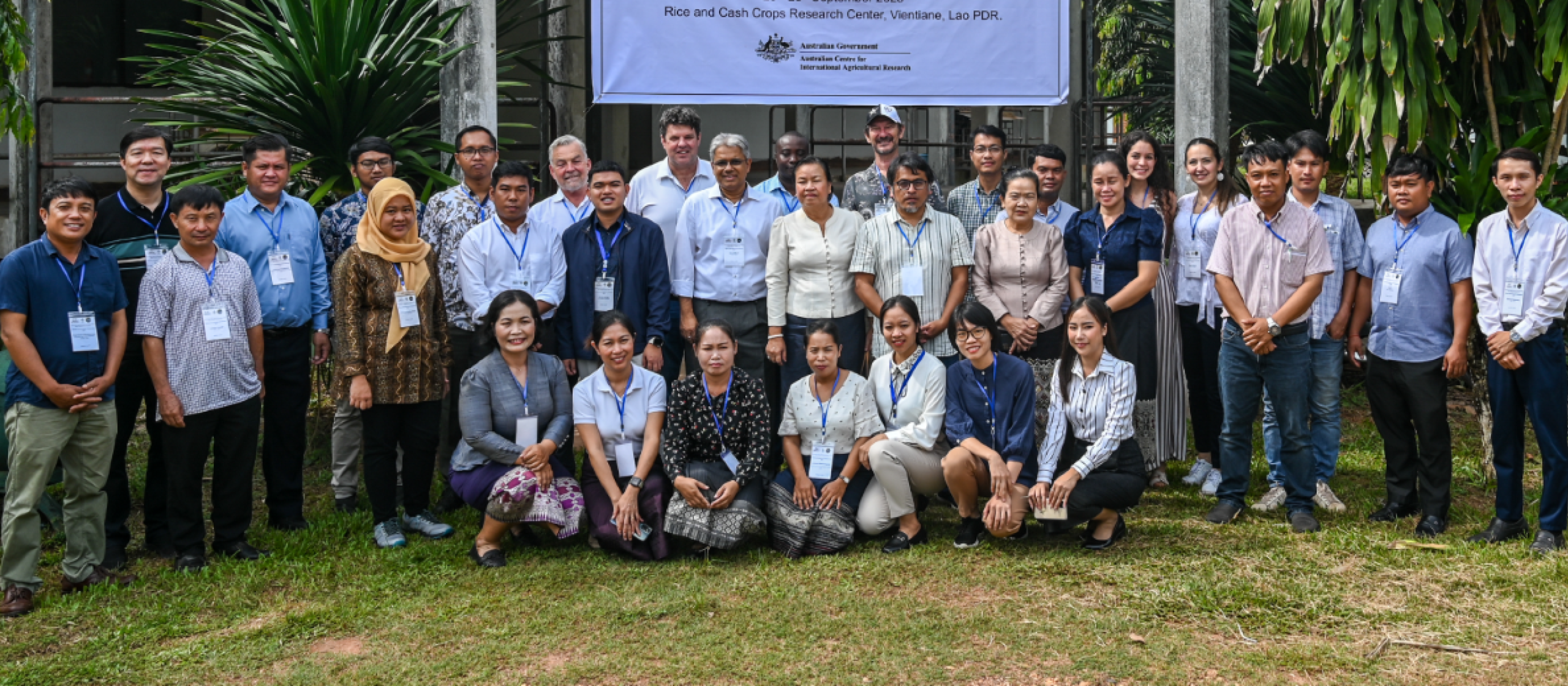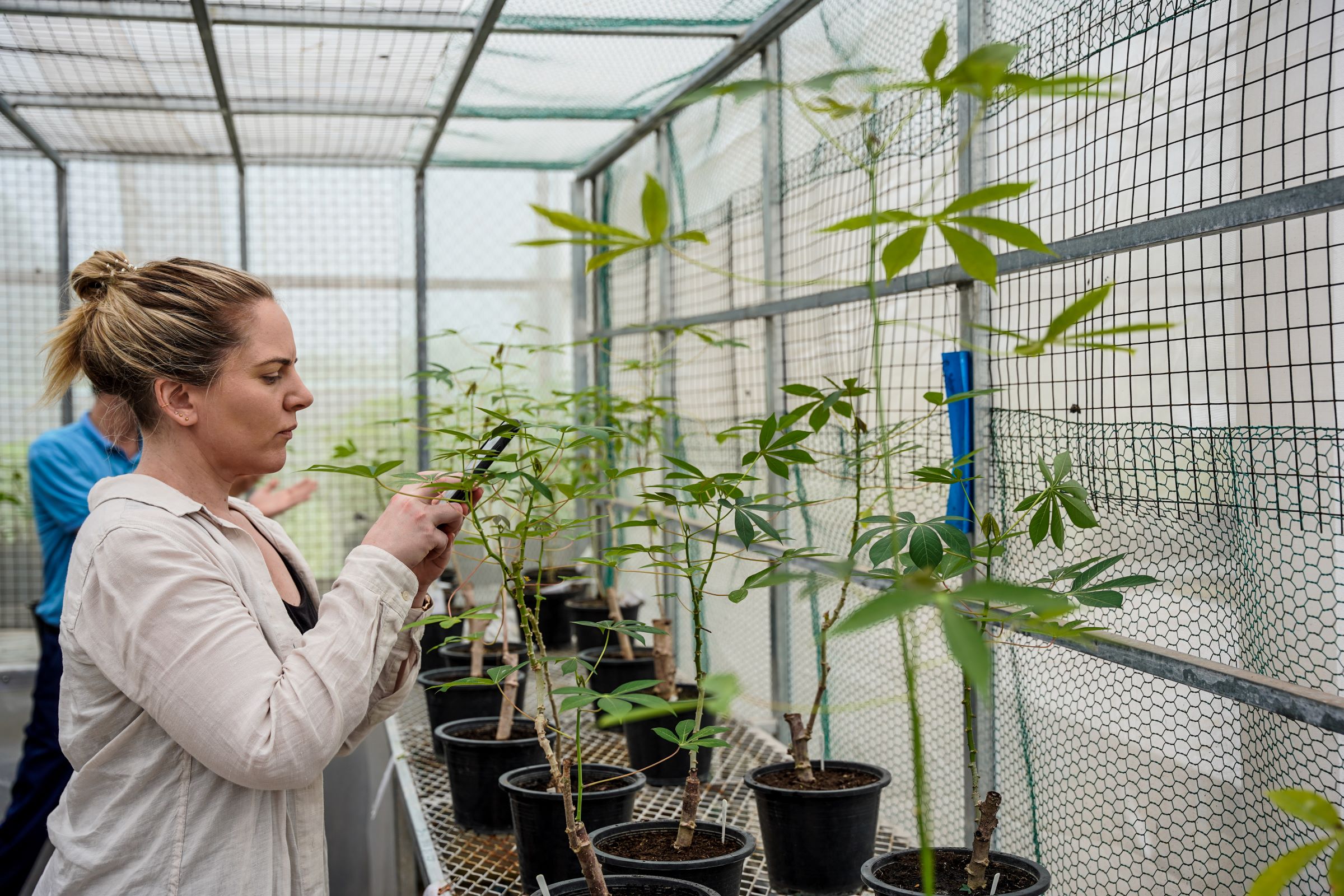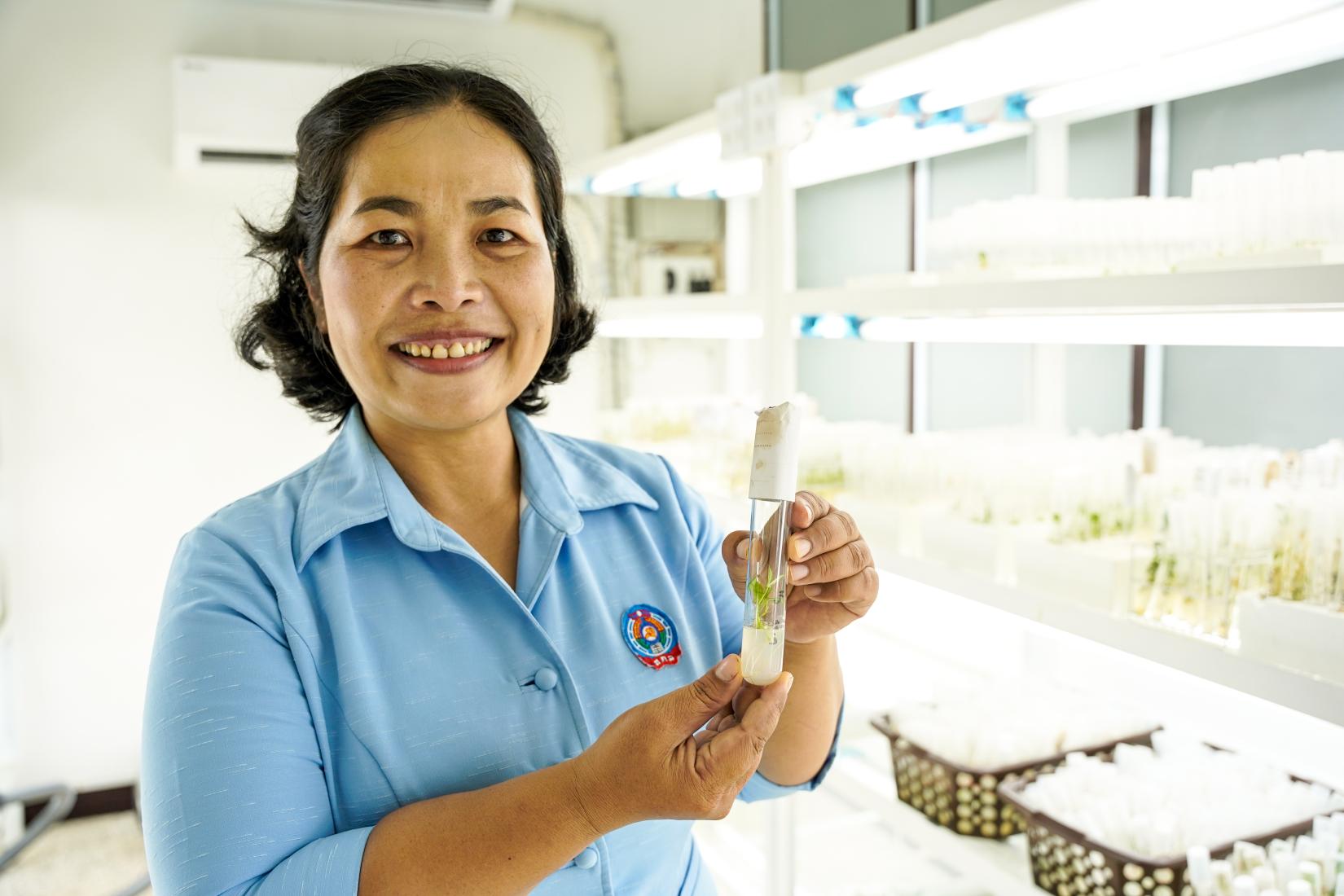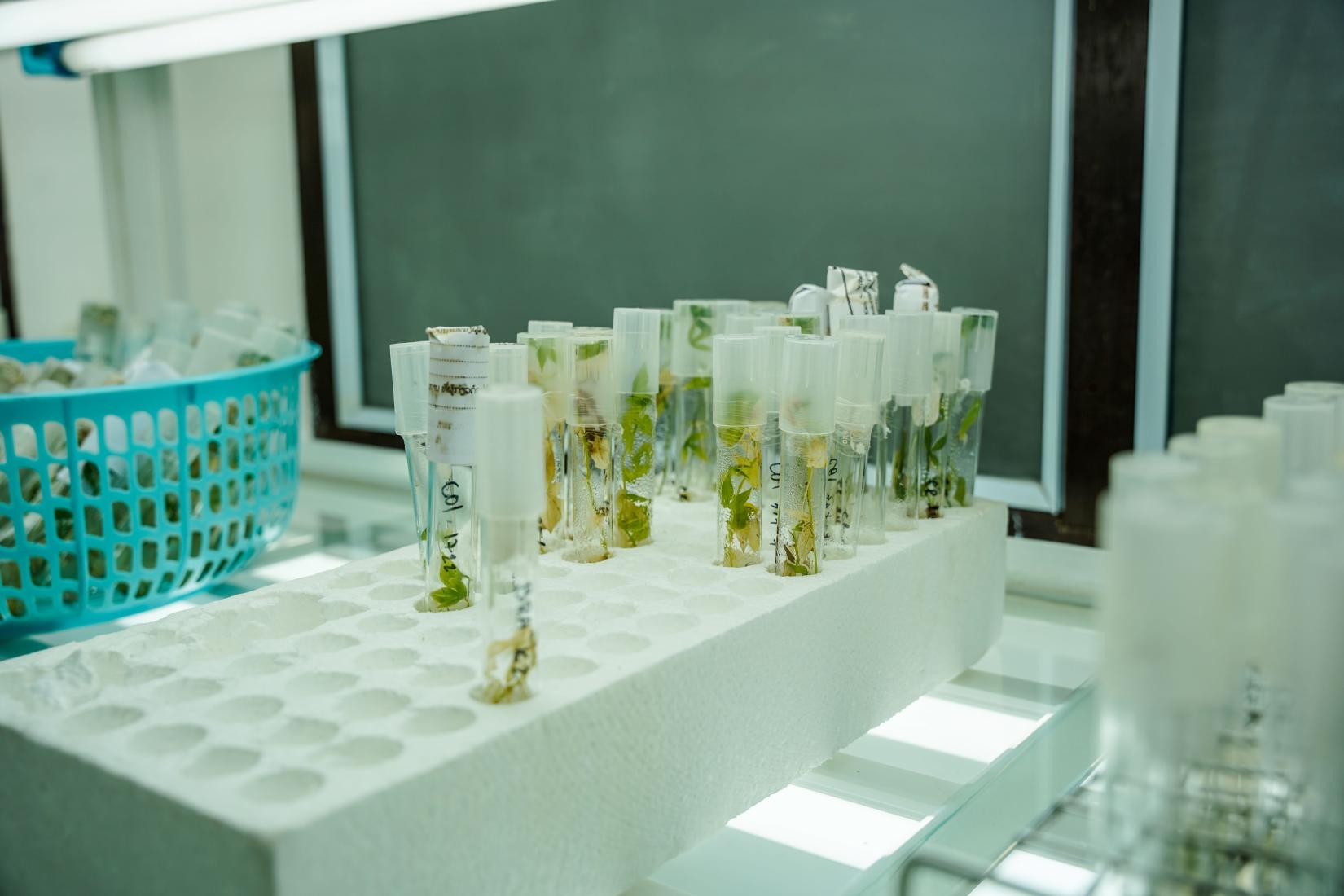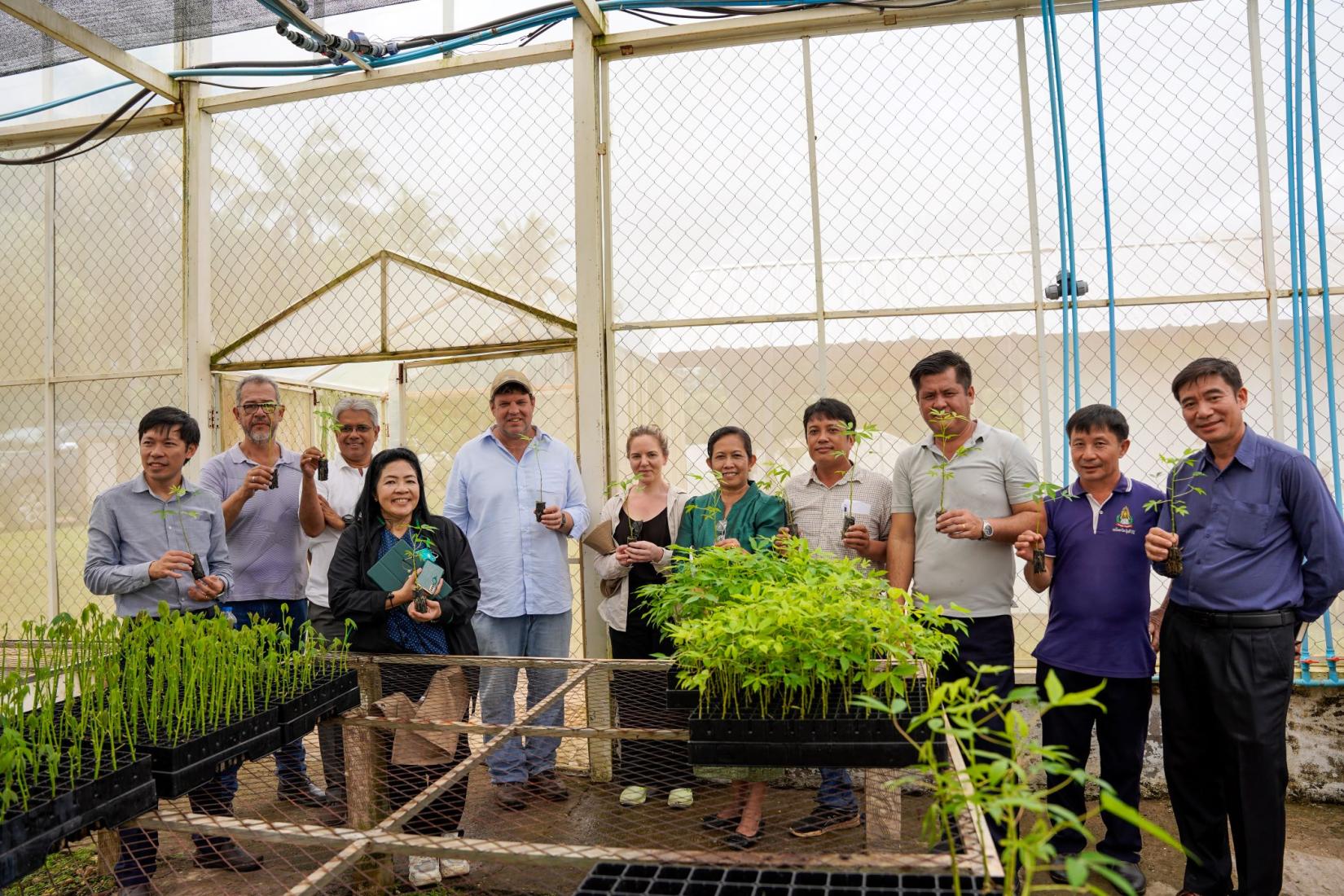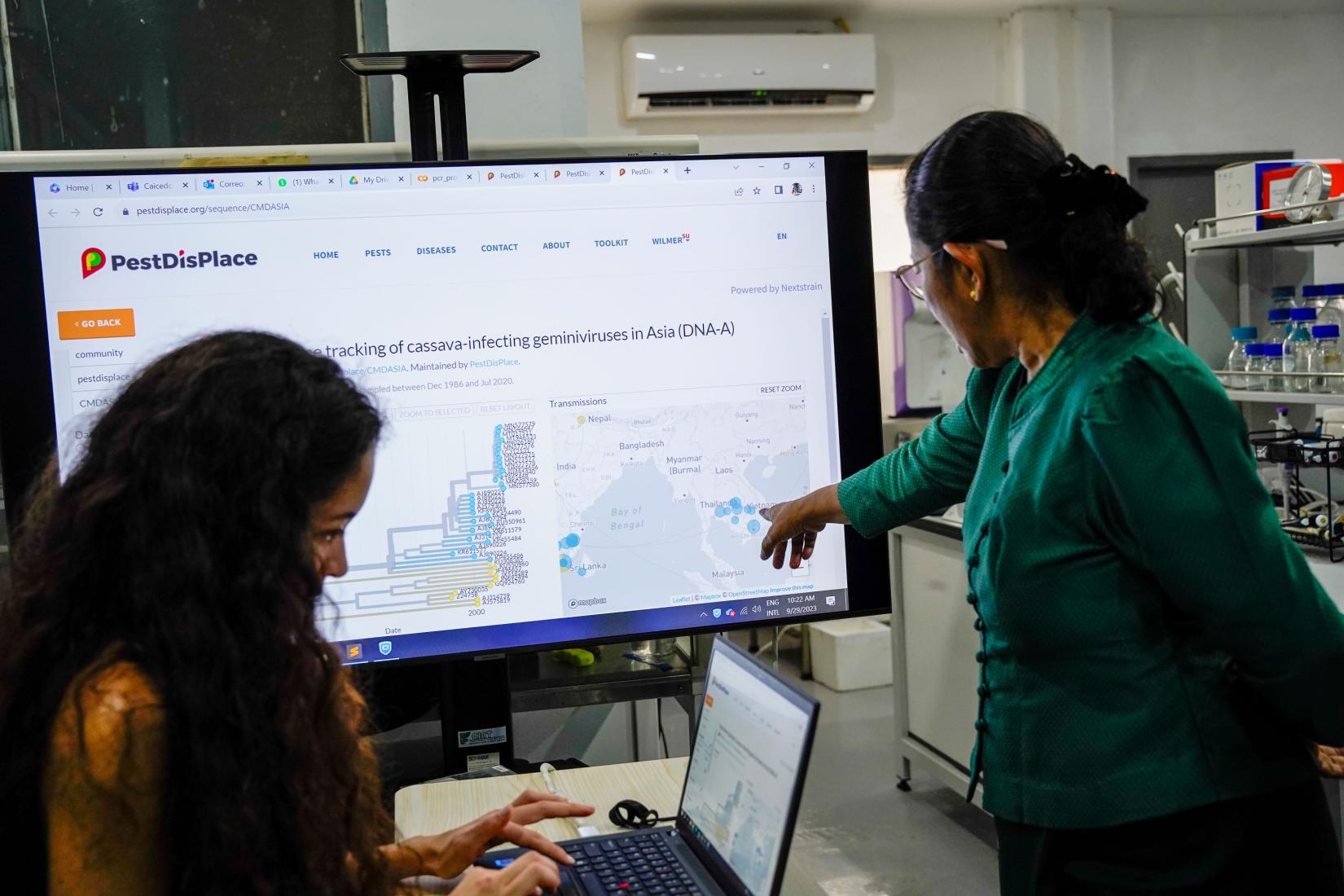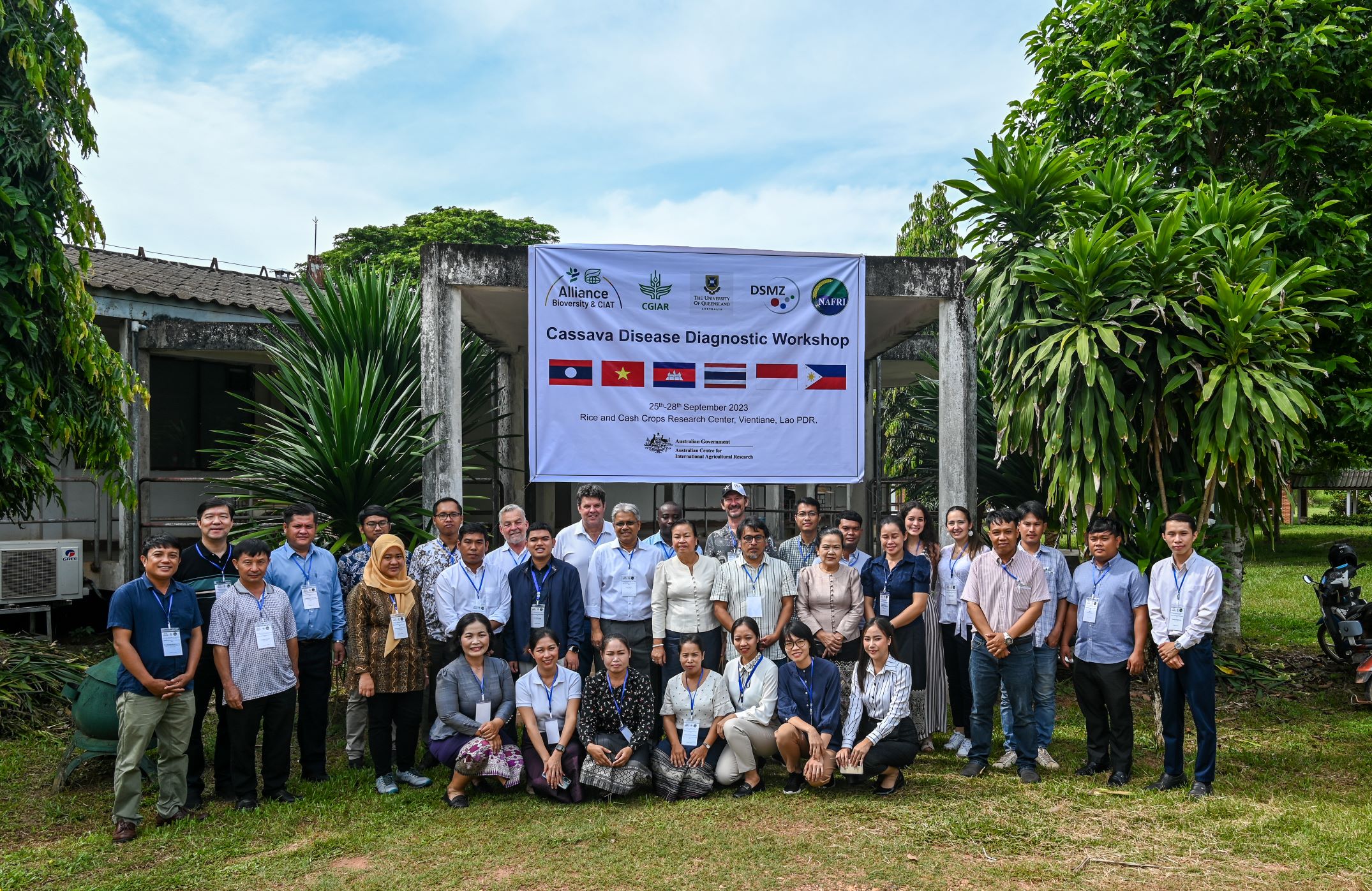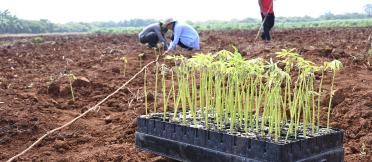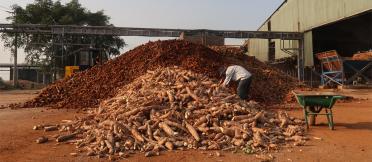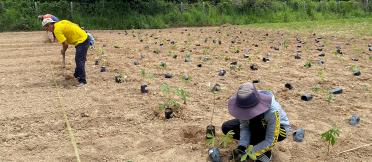The Future Stems Centre was established in 2021 as part of a 5-year, A$4 million project to produce and distribute disease-free cassava planting materials to smallholder farmers in Laos and the region.
The project, which was completed in 2023, was a collaboration supported by ACIAR, partnering with Alliance Bioversity (CIAT) and Laos' National Agriculture and Forestry Research Institute (NAFRI).
Distributing clean cassava plants to farmers is one of the most effective strategies for disease control.
But, traditionally, cassava multiplication was slow, with a single plant producing only 10 stem cuttings per year. As CIAT’s Dr Jonathan Newby, who led the project, explained, ‘This limited approach would take years to reach the millions of hectares under cassava cultivation in Laos and Southeast Asia.’
The Future Stems Centre uses rapid multiplication techniques, and is now producing 125 stem cuttings a year from each plant.
Production is also more hygienic, reducing the risk of the cuttings becoming contaminated.
It’s a race against time while diseases are spreading. ‘The more we can multiply healthy planting materials, the greater the chance of preventing the spread of diseases,’ said Mrs Soukphathay Simeuang, a tissue-culture technician at NAFRI, who has played a crucial role with her team in achieving the high rates of multiplication.
The disease-free tissue culture plantlets of several varieties were bred in Vietnam and Thailand by project partners and sent to Mrs Simeuang in Laos for multiplication. Her team’s role was to make sure these plantlets were disease-free and clean for use in the multiplication process.
Initially hesitant to take part in the project due to her lack of cassava experience, Mrs Simeuang 's dedication grew as she saw the potential to help farmers. 'I want to take the opportunity to help save the lives of smallholder farmers in my country,’ she said.
